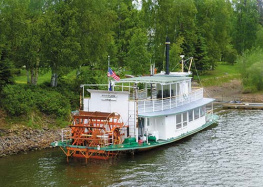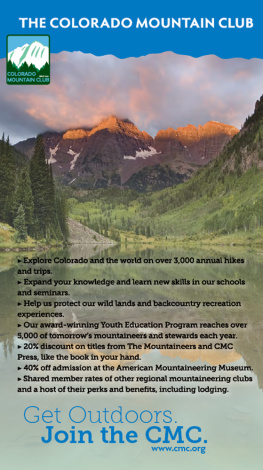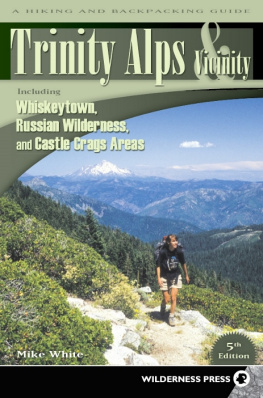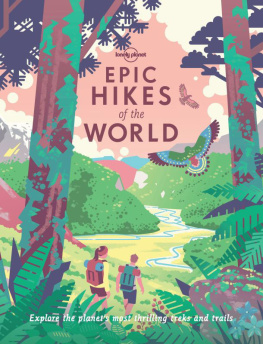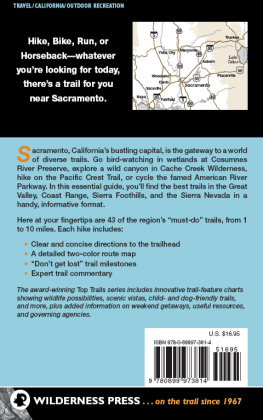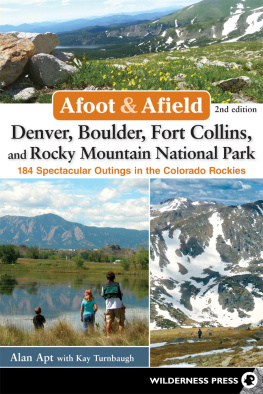50 Hikes Around Anchorage
50 Hikes
Around Anchorage
Walks, Hikes, and Backpacking Trips
in Southcentral Alaska
LISA M. MALONEY
AN INVITATION TO THE READER
Over time trails can be rerouted and signs and landmarks altered. If you find that changes have occurred on the routes described in this book, please let us know so that corrections may be made in future editions. The author and publisher also welcome other comments and suggestions. Address all correspondence to:
Editor, 50 Hikes Series
The Countryman Press
P.O. Box 748
Woodstock, VT 05091
LIBRARY OF CONGRESS CATALOGING-IN-PUBLICATION DATA HAS BEEN APPLIED FOR.
50 Hikes Around Anchorage
ISBN 978-0-88150-905-2
Greater Anchorage map, Erin Greb Cartography, Countryman Press. Hike maps created by Douglas Yeager, using TOPO! software, 2010 National Geographic Maps Book design by Glenn Suokko Text composition by PerfecType, Nashville, TN Interior photographs by the author
Copyright 2010 by Lisa M. Maloney
First Edition
All rights reserved. No part of this book may be reproduced in any form or by any electronic or mechanical means including information storage and retrieval systems without permission in writing from the publisher, except by a reviewer, who may quote brief passages.
Published by The Countryman Press, P.O. Box 748, Woodstock, VT 05091
Distributed by W. W. Norton & Company, Inc., 500 Fifth Avenue, New York, NY 10110
Printed in the United States of America
10 9 8 7 6 5 4 3 2 1
With thanks to everyone who has been so very patient with me throughout the process of creating this book. L.M.M.
50 Hikes in Anchorageat a Glance
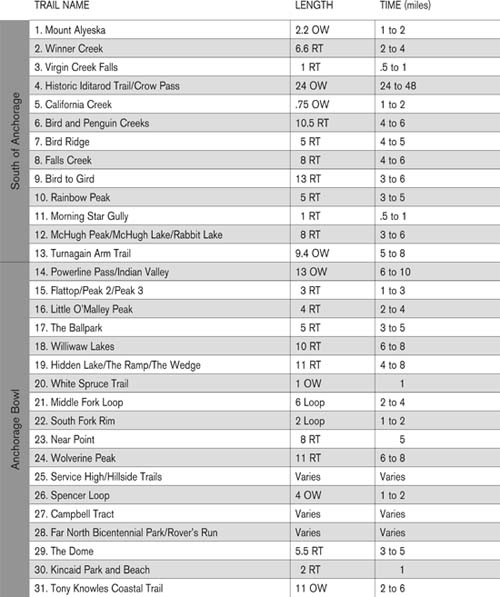
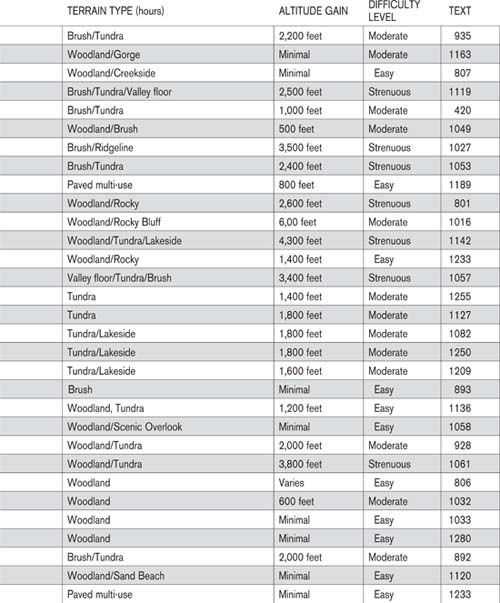
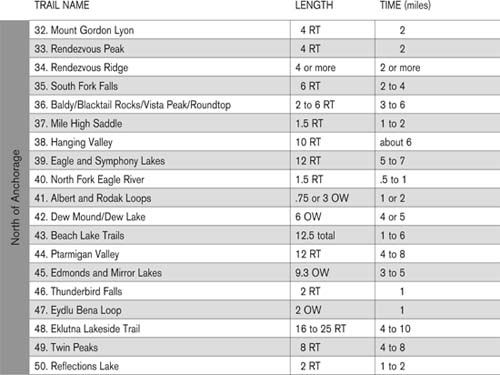
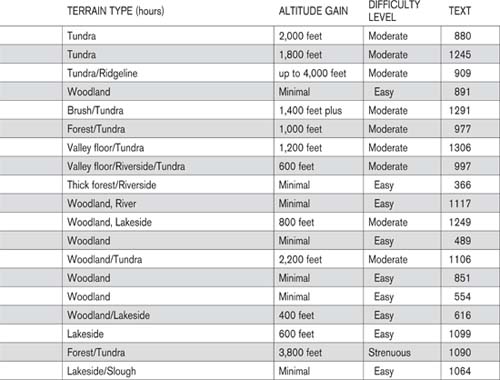
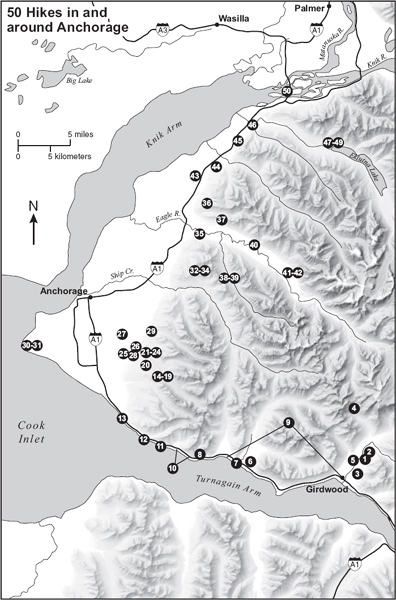
Contents
THE HIKES
Introduction
Every year, without fail, I overhear a child announce her first glimpse of Alaskas gargantuan summer greenery. Usually the cry goes something like, Look, Mom! Its just like Jurassic Park! I couldnt say it better myself; my own inner child remains every bit as in awe of this place as it was when I first set eyes on it at eight years old. I remember being terrified that I was going to a land made up of one single mountain ridge, where the horsesmy fascination at the timehad one set of legs shorter than the other because theyd been walking on the slanted slopes for so long. When I actually saw where Id landed, I was thrilled.
My relationship to the land has changed over the years, keeping close pace with my own internal development. I used to traipse around in the woods hoping to find myself, to have the fabled outdoor epiphany. People all around me were forever waxing poetic about what a spiritual experience it was to stand on a mountaintop or find other ways of pushing themselves to the limit. I figured that if I spent enough time outside doing the same thing, I would achieve a similar state of bliss. And for a while, it worked.
Eventually I realized that everything I needed was and had been inside me all along, not waiting to be plucked off some hard to reach peak. But along the journey I took toward figuring that out I had some interesting experiences, a lot of fun, and finally decided that it was okay to enjoy the outdoors without having to go full throttle all the time. They say that the best way to make life changes is by forming a habit. Well, my habit of hiking and exploring the mountains around Anchorage has long since been established, and I like it, so I reckon Ill just keep doing it.
In 2005 I started writing an outdoor column, Head Lamp, for the Anchorage Press. Unbeknownst to me, 50 Hikes Around Anchorage starting taking shape in the piles of Press clippings I amassed over the years. The end result is the book youre holding now.
THIS BOOK
Together, 50 Hikes Around Anchorage and another Countryman Press title, 50 Hikes in Alaskas Kenai Peninsula, cover much the same geographic area that other Alaska hiking guidebooks do, but in greater local detail. Even so, I had to pick and choose which trails to include in this book; there are so many in the Anchorage area to choose from. I tried to strike a pleasant balance between covering the big, important hikes and highlighting unusual and interesting trails from inside the complex web that covers much of the town, parkland, and Chugach State Park.
I strongly doubt that any single book can untangle those trail knots and webs in any truly useful manner. What I hope Ive done is given you some starting points, places from which you can conduct your own explorations because, after all, theres no substitute for personal familiarity with a trail. This guide is meant to get you out the door and on your way.
HEADS UP
There are a few things you should know before heading out. Alaska is twice the size of Texas, and its entire population is less than that of the city of San Francisco. Thats a lot of space and not very many people. As a result, some things work differently here. For example, if you get lost and rely on the old tactic of following water downhill to find civilization, you might end up in a community that can help you... or you might end up, miles and miles later, in a mountain valley or at the shore with no people in sight.
Some people get careless when theyre hiking near Anchorage, especially from the extremely popular Glen Alps trailhead. This is a pity because, even so close to town, almost all the hazards of backcountry travelrapid weather shifts, avalanches, difficult terrain, and wildlifestill apply. Many deaths and serious injuries could have been prevented if people didnt take their safety for granted because theres a city nearby.
This doesnt mean that you have to haul everything and the kitchen sink with you every time you step outside, but you should get used to following a few common sense rules every time you hike:
File a trip plan with someone responsible; tell them where youre going, when youll check back in with them, and what they should do if they dont hear from you. Then stick to that trip plan.
Travel with a buddy if possible.
Assemble a lightweight emergency supply kit and make sure you always have it with you; just store it in your hiking pack at all times. Know how to use the items in it. See appendix B, Recommended Reading, for good references on survival techniques and what items to carry. I highly recommend taking a wilderness survival class; this will help you figure out what you, personally, feel comfortable carrying in an emergency.
Heres my list of must-haves, all of which fit comfortably into the inside pockets of my coat or my smallest pack; I adjust the contents sometimes depending on how far Im going:


